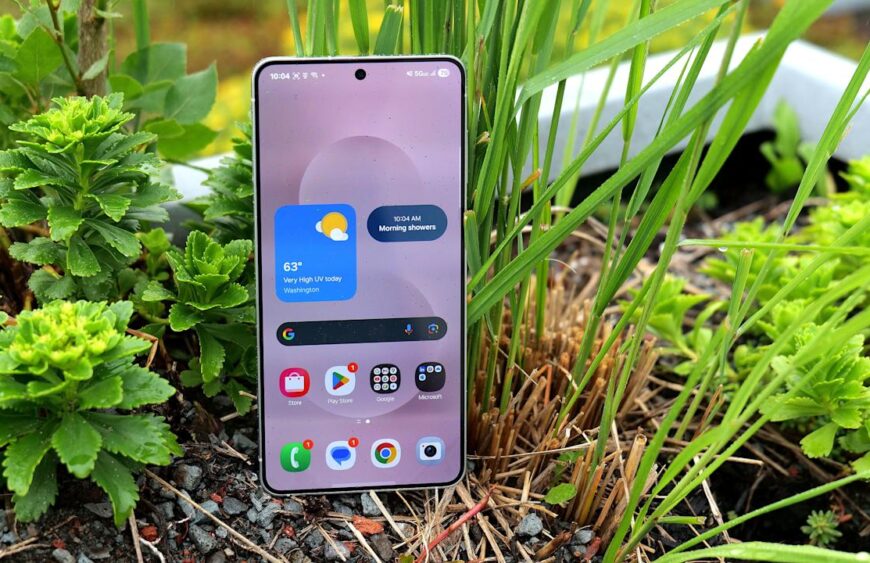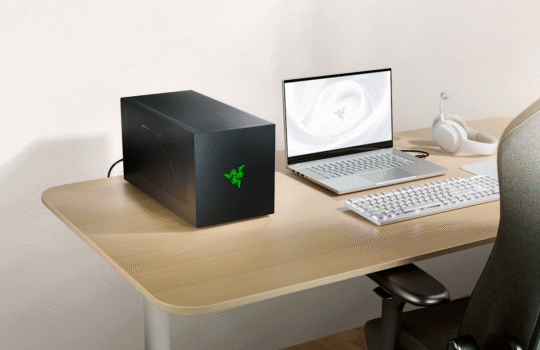More than just super thin

When I first heard Samsung was bringing back the Edge name as a new super-thin member of the S25 family, all I could think was: Why? Honestly, I thought phone makers had gotten over their hunger for thinness nearly a decade ago. The quest to shave millimeters off devices resulted in worse battery life, extra heat and more limited features. So what gives?
On a certain level, just like fashion, older trends can over time become fresh and stylish again. Additionally, after phones made the transition to 5G — which required extra power, more complex modems and larger antennas — modern components have started shrinking again, essentially paving the way for the return of slimmer handsets. But then it hit me. While thinness may be the most striking thing about the Galaxy S25 Edge, that’s not enough to justify the creation of a whole new device. Instead, I believe this phone is a part of a larger mission by Samsung to make the middle child of its flagship mobile lineup a more appealing member of the family. And when viewed in that light, I actually think it’s largely a success.
Design
While it suffers from a smaller battery and no telephoto lens, the S25 Edge is more than just a super sleek phone designed purely for extreme thinness.
- Sleek design
- Titanium frame
- Big 200MP main cam
- Bright OLED display
- Smallest battery on any S25 phone
- No telephoto lens
- Mediocre wired charging speed
- Not fully Qi2 compatible
Now don’t get me wrong, despite my gripes about how thinner phones are less practical, the S25 Edge is beautifully designed. At just 5.8mm thick (0.23 inches), it feels impossibly sleek. What might be even more impressive is that Samsung hasn’t sacrificed durability to get here either. Just like the S25 Ultra, the Edge features a titanium frame, an IP68 rating for dust and water resistance and an even stronger Gorilla Glass Ceramic 2 panel covering its display. The one difference is that the Edge’s screen has a glossy finish instead of matte like on the Ultra because — and I kid you not — Samsung says an anti-reflective coating would have increased its thickness. Kudos to sticking to a strict design philosophy, because in terms of sheer feel and aesthetics, S25 Edge is undeniably enchanting.
However, while the S25 Edge shares some characteristics with the Ultra, like its frame and main camera, at least when it comes to its overall size, it’s really more of a refreshed take on the S25+. It has the same 6.7-inch OLED panel with a 120Hz refresh rate that’s just as vibrant and wonderfully colorful as before. Although it does weigh a bit less at 163 grams or 5.75 ounces versus the S25+ (190g or 6.7 oz).
Performance
Like the rest of the S25 family, the Edge is powered by a Snapdragon 8 Elite for Galaxy chip with 12GB of RAM and either 256GB or 512GB of storage. Despite the compact dimensions, Samsung still found room to squeeze a vapor chamber inside to prevent throttling and overheating. So even when pushed, the back of the phone rarely got more than lukewarm while delivering strong performance as I was gaming, multitasking or doing pretty much anything else you can think of.
Cameras
The other major departure from the S25+’s basic template is that the Edge features the 200MP main sensor from the Ultra, along with a 12MP ultra-wide cam. But there’s no dedicated zoom. Now at first, I was a bit upset because I think any phone this expensive should have a telephoto lens. That said, the massive amount of pixels the Edge’s primary sensor can capture means you have quite a bit of freedom to crop in without degrading image quality. You just need to remember to tell the camera to shoot in full 200MP mode instead of the standard 12MP setting. One other small change is that Edge features a slightly wider-angle 12MP selfie cam than the S25+ and Ultra, which allows you to fit more people in group shots, but that’s really the main difference.
In general use, the S25 Edge takes great pics. Colors are rich and details are crisp, though you still get Samsung’s slightly oversaturated hues and warmer tones. The same goes for low-light shots. For this review, instead of comparing it to a Pixel or iPhone, I pitted the Edge against the Motorola Razr Ultra. I feel like both are attempting to woo people who want a sleek and stylish device, but they are doing it in very different ways.
What immediately jumped out is that foldable phones (at least the Razr) still lag behind more traditional glass bricks, even ones as thin as the Edge. In nearly every shot, Samsung’s handset produced brighter, sharper and better-exposed images than Motorola’s. So if you’re the kind of person who wants a compact phone without needing to sacrifice image quality, the S25 Edge is a stronger pick.
Battery life
The biggest trade-off when making a phone this skinny is having less room for its battery. As such, the S25 Edge has the smallest power pack in the family at 3,900 mAh, which is 100mAh less than what’s in a base S25. This led to a time of just 25 hours and 59 minutes on our local video rundown test. That’s not terrible, but it is three and a half hours less than what we got from the S25 Ultra (29:27) and two hours worse than a standard S25. For those who care a lot about longevity, you have been warned.
Thankfully, the S25 Edge still has support for wireless charging at an acceptable 15 watts, though its wired speeds are just average at 25 watts. However, as the phone is merely “Qi2 ready,” anyone who wants to use compatible magnetic wireless accessories will need to buy a case or an adhesive mount with a built-in magnet, because there isn’t one inside the phone itself.
Wrap-up
The S25 Edge is a divisive phone. I still don’t fully grasp the desire to make modern phones thinner than they already are. Particularly if you’re like most folks and you throw the thing in a case as soon as you get it (even when accounting for Samsung’s new super slim option). Shaving off an extra 1.5mm over the standard S25 doesn’t really make a tangible difference in how you use it, unless you consider the phone’s reduced battery life a good thing.
But as an alternative to the humdrum S25+, suddenly things get a lot more interesting. Samsung’s previous middle child costs significantly more than a base S25, but it doesn’t have the fancy features like a super high-res main camera or a titanium frame like you get on the S25 Ultra. Really, the S25+’s most attractive feature is a nicely-sized 6.7-inch screen.
Now here’s where the Galaxy S25 Edge comes in. It has all of those things alongside a super thin and wonderfully crafted chassis for the same $1,100 starting price as the S25+. Yes, Samsung sacrificed some battery capacity and the phone’s dedicated zoom to get here, but those aren’t straight-up dealbreakers. That’s because with the Edge, the new in-between member of Samsung’s flagship mobile family is more than just skinny — it has a stylish identity that can stand on its own.
Trending Products






